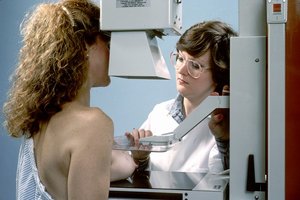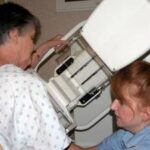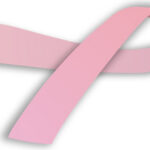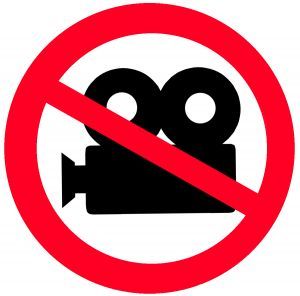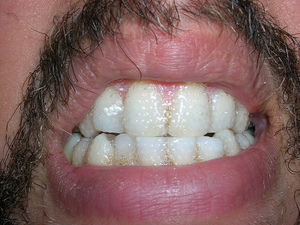Last week, I had my annual mammogram. As usual, I was asked to complete a questionnaire. One question caught my eye. I’m sure it was always there; I just never thought much of it. Sex: Male or Female. What? Why would they be asking that? I knew that men could get breast cancer, but I never thought about how they would be diagnosed. So, I asked the technician.
Sure enough, she said men have mammograms, too. My immediate response was, “Ouch!” It is no fun for women. For some it’s downright painful. But, for a man? I had visions of pulling and stretching the breast tissue to get it into position. For those of you not in the know, the breast is placed between two plates and compressed. Two x-rays are taken of each breast. Upon hearing this, I had to learn more. The following is what I found.
The National Library of Medicine says male breast cancer is rare, occurring in men between 60 and 70 years of age, though being diagnosed at a younger age is not uncommon. It accounts for about one percent of all breast cancer cases annually. “Risk factors…include exposure to radiation, a family history of breast cancer and having high estrogen levels, which can occur with diseases like cirrhosis or Klinefelter’s syndrome.” Many men believe that breast cancer happens only to women. If they find a lump or notice changes in their breasts, they are reluctant to see their doctor. Because of this, the survival rate is less than that of women. If they did see a doctor early on, the survival rate would be the same.
Diagnosis is the same for both sexes as well. Monthly breast exams are advised and should be performed the same as women. For a mammogram, men usually have just enough breast tissue to get a good picture. If they don’t, other options are an ultrasound or a biopsy. The treatments are the same.
It is import for men to look at their family history. If they have a close female relative who had or has breast cancer, they have the same risk as other female relatives.
The John W. Nick Foundation is a non-profit organization founded by the daughter of John Nick. He died of breast cancer in 1991 at the age of 58. Six years earlier he began seeing a string of doctors about concerns he had. Each one told him it was nothing. So, he did nothing. By the time he found a doctor who shared his concerns (in 1989), it was too late. On this website there are several stories of men who were diagnosed with breast cancer. Not all of them survived; all were under the age of 60.
Don’t be a statistic. Look at your family history. Do monthly breast exams. If you find something unusual, see a doctor. Don’t think that it only happens to women or it can not happen to you.
Works cited:
Imaginis Corporation. Breast Cancer in Men. Retrieved from http://www.imaginis.com/breasthealth/mammography_small_breasts.asp on June 3, 2007.
John W. Nick Foundation, Inc. Personal Stories. Retrieved from http://www.johnwnickfoundation.org on June 3, 2007.
National Library of Medicine. May 19, 2007. Male Breast Cancer. Retrieved from http://www.nlm.nih.gov/medlineplus/malebreastcancer.html on June 3, 2007.
USA Today. September 18, 2001. RichardRoundtree ‘Knows the Score’ on cancer. Retrieved from http://www.usatoday.com/news/health/spotlight/2001-09-18-roundtree-cancer.htm on June 3, 2007.
